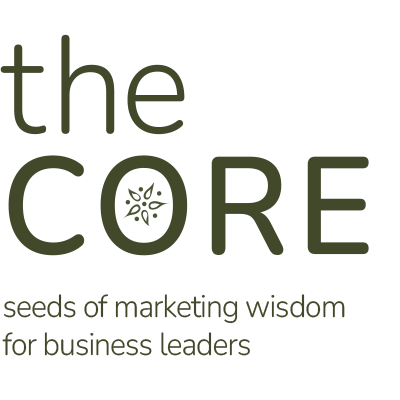At this point in time, half of all businesses conduct virtual sessions 20 to 30 times a year. Virtual events are low friction, with fewer barriers to attendance. (No more driving in the snow or paying for parking.) They can also extend the reach of your event far beyond your local circle while having almost no overhead costs. Online events are also recordable, which is incredibly valuable from a marketing collateral perspective. Key moments from an event can be repurposed and used on social media channels to bring additional attention to your brand. If you want to optimize the events you’re already holding, or dive into the virtual space for the first time, we have a few tips for planning a virtual event.
A Marketing Agency’s Review of LoyaltyLoop
With several options for survey platforms competing for your business, which one is the best for your business? The right answer for your team depends on your specific needs. So, to help you during the decision-making process, we would like to share our experience with the survey platform LoyaltyLoop.
LoyaltyLoop is a common tool used by both B2B and B2C companies to better understand their customers’ opinions about their service and improve the customer experience. You may have used one of its competitors, such as Qualtrics (formerly known as Survey Monkey) or Delighted. Or, perhaps, you’ve never used a customer survey platform before and are just getting your bearings.
Wherever you are in the process, we hope that this review of LoyaltyLoop will help you make an informed decision. We spoke to our Senior Client Relations Specialist, Olivia Cooper, to learn more about the pros and cons of this software.
Pro: Simple and User-Friendly Interface
We have found LoyaltyLoop’s interface to be user-friendly and straightforward. Still, we understand that we as an agency might have a different view of what is “user-friendly” because we use these types of tools regularly. For clients who aren’t well-versed in marketing lingo and processes, we believe that it will also be an intuitive experience. When asked her opinion on LoyaltyLoop’s ease of use outside an agency environment, Olivia replied, “For clients who are using this type of platform for the first time and want to log in and have the experience be as clear as possible, this interface will be great for them too.”
Pro: Quick and Professional Customer Service
Another benefit of using LoyaltyLoop is the platform’s quality customer service approach. Olivia notes, “I’ve had good experiences with their customer service. They’re always quick to solve our needs, and they follow up regularly on projects we’re working on.” Any time you’re using software essential for business growth—especially one you’re paying for—you want to be sure that you can reach out for help if needed. LoyaltyLoop is an excellent option for good customer service.
Con: Basic Customization Options
One element that our team hopes LoyaltyLoop will improve over time is its customization options for the survey and follow-up emails sent to our clients’ customers. Olivia notes that she wishes “there were more customization options for the communications sent out through the platform.” She went on to give an example for added context: “We use LoyaltyLoop’s follow-up email templates to send after someone completes a survey, but the customization options to design the email are pretty basic right now. However, even with those basic options, these emails are very effective,” she adds.
Though the basic customization is a drawback, it does not affect the effectiveness of LoyaltyLoop’s customer communications. We’ve found this platform to be a beneficial tool for our clients looking to build trust with their customers and improve their customer service.
Want to Improve Your Customer Service?
Your customer survey strategy can be a powerful tactic to add to your marketing efforts. Our clients use these types of strategies to monitor and improve upon their NPS scores, customer service tactics, and the overall customer experience.
We can help. Want us to join your team? Contact us today to schedule a consultation. We are happy to sit down with you to discuss your goals and how we can walk alongside you to achieve them.
Defining Your Ideal Customer for Higher Lead Generation
Hoping to improve your lead generation results? Knowing your customer on a deeper level allows you and your team to remain in alignment on the who, what, when, where, and how of your customers’ motivations. Your clarity in these areas allows you to build a strong lead generation strategy to guide your marketing and advertising efforts moving forward.
This article will explore how to define your ideal customer profile to better understand your customer’s motivations, needs, and challenges. We recommend that you take this information into account as you think through new ways to reach those customers and encourage them to take action.
Understanding Your Customer: B2B vs. B2C
Profiling your customers is helpful for both B2B and B2C clients—however, the approach is different for each.- For B2B customers: Instead of imagining a single individual, you will be building a profile for the ideal business that you would like to work with. You may look at aspects of their business such as size, industry, values, and structure. These elements, and many others you might identify along the way, add up to paint a picture of what types of companies you prefer to work with, and why.
- For B2C customers: With B2C customers, you’re focusing on your customer at an individual level, identifying what types of people your products or services are for. Elements that you focus on may be their age, location, interests, needs, and several other factors.
Leaning On The Data
Your ideal customer isn’t merely a matter of perspective, opinion, or a shot in the dark. It’s also a matter of data. If you’ve been in business a while, you likely have metrics to reference when determining your typical customer. Look at your website, social media accounts, and email marketing statistics to gain an understanding of who your current marketing efforts are already attracting and where you might have an opportunity to expand your reach.Using What You Find
This is the best part—using what you discover. Once you’re ready, use what you’ve learned to build a robust lead generation strategy that hinges on your findings. What does this mean? For example, suppose you found that your ideal customer is a young professional in your area who is motivated by excelling in their career. In that case, you might decide that the best way to reach that person is through targeted LinkedIn ads and face-to-face at local professional organizations. Take what you now understand about that customer and use it to your advantage. You have the data you need to lead you straight to your ideal customer, and now it’s time to encourage them to take action with your company.Build a Lead Generation Strategy with Green Apple
If you want to dig into your customer’s characteristics even further, we recommend checking out our recent article “20 Questions to Ask Yourself that Will Improve Your Customer Profiles.” Green Apple Strategy can help you find your ideal customer and discover new ways to speak to their pain points. Ready to get started? Contact us today to schedule a consultation. Our team is happy to sit down with you to discuss your goals and how we can help you achieve each and every one of them.3 Ways to Improve Zoom Meetings with Your Clients
If quarantine had a popularity contest, Zoom would have reigned supreme—and to think there was once a time when this company was not a household name! Zoom meetings have allowed companies to remain as “business-as-usual” as possible during the uncertain times of the past year. Most importantly, Zoom has allowed us to maintain a personal connection to our client base, which is pivotal to healthy business collaborations.
Although Zoom has been a lifesaver for businesses and families alike throughout the pandemic, unfortunately, it is still only a substitute for face-to-face communication; there are still many obstacles you must consciously work to overcome in order to achieve successful communication. As a respected business leader, it is our duty to overcome any communication barriers and ensure that our client interactions are of top-notch quality.
In this article, we discuss three ways in which you can improve the quality of your Zoom meetings with clients.
1. Familiarize Yourself with Customizable Options
As with any new technology that you integrate into your daily business operations, there is a slight learning curve while familiarizing yourself with Zoom and all of its settings. It is certainly of no help that over the last year, as its popularity skyrocketed, numerous changes have been made to this application. Due to these constantly changing features, it’s even more vital for you to ensure that your team is familiar with the default settings and how to appropriately customize them. One feature we feel is especially important to client communication is to turn on the “Always Display Names” setting, so that you or your clients are never second guessing names. We’ve also all heard of that urban legend where something embarrassing happens in the background of a coworker’s Zoom meeting, so protect yourself from this unfortunate mishap by customizing your background to something simple (and safe!). Another feature we highly recommend is the “Waiting Room.” Use this feature to gather yourself and prepare rather than immediately being thrown into a client meeting.2. Organize Your Zoom Experience
Conducting a high-stakes client meeting via Zoom can feel overwhelming and unnatural, even a year later. Fortunately, there are measures you can take to minimize this stress. Take time to prepare prior to meetings in the following ways:- Adjust your settings to automatically record and save meetings
- Have an agenda handy (and distribute to other meeting participants beforehand)
- Adjust privacy settings prior to meetings for peace of mind
- Distribute the meeting link and ID prior to the day of the meeting
- Select the “Hide Non-Video Participants” setting so that you can direct your focus
3. Encourage Participation
At this point, we all have Zoom-meeting fatigue, which is why it’s more important than ever to engage with clients and encourage them to participate in virtual meetings. A great way to encourage participation is to direct meeting attendees to use the “Reaction” and “Chat” features. Because time is of the essence during virtual meetings, these features allow for interactions between individuals while not disrupting the flow of the original agenda. The chat feature allows additional notes and resources to be shared with ease and referenced at a later date. Above all, the goal to keep in mind while considering virtual meeting participation is that your job is to encourage rather than intimidate. Speak with energy and convey to your clients that their ideas matter and that you are genuinely interested in collaboration rather than a lecture. Are you looking for a strategic, full-service marketing firm centrally located in Nashville? Contact Green Apple Strategy today to schedule a consultation. Our team is happy to sit down with you to discuss your goals and how we can help you achieve each and every one of them.Enneagram and Marketing: How Type Ones Accelerate Your Strategy
Are you an Enneagram Type One? Have one on your team?
Type Ones are known for their sense of responsibility to improve the world around them. They tend to accomplish this by striving for perfection, following the rules, and doing what’s right. This person is your organizer—the one keeping everyone in check and keeping everything moving.
We’re lucky to have a Type One on our team that is a master of attention-to-detail and organization—two common traits of this Enneagram group. Olivia Cooper, our Senior Client Relations Specialist, is the secret weapon of our marketing team. Let’s take a look at why that is and how the Type One on your team can help accelerate your marketing strategy.
Read More: How Understanding The Enneagram Can Help Your Customers
Type Ones Identify Opportunities for Improvement
“Type Ones are often improvement-oriented. We love to fix everything or solve problems to make something as perfect as it can be. Marketing is always changing, so it’s important to constantly make strategies better as the industry and clients evolve,” says Olivia. What an essential quality in marketing, right? This right here is what we love about our Olivia, and what we love about Enneagram Type Ones as a whole: they continually make us better marketers, better brands, better communicators. You name it, and your Type One will help you identify opportunities for improvement to make your brand better as a whole. After all, in our fast-changing world, we need Type Ones to show us the light and help us to keep up.Type Ones Have Great Integrity
“I care very much about doing the ‘right thing.’ Being ethical in marketing is extremely important for transparency with consumers!” she says. Above all, consumers want a brand they can trust so that they can feel good about where their money goes. The Type Ones on your team will always be looking to do what’s right by you and your audience.Type Ones Are Organized
“I am pretty organized, which helps me keep everything together. This is especially useful for marketing at an agency, where I’m balancing many different clients at once,” Olivia explains. In fast-paced environments, Type Ones are your ally. They will be the person keeping your projects afloat and ensuring that nothing is overlooked along the way.Type Ones Are Detail Oriented
We all like to say that we’re detail-oriented. In fact, I would venture to say that you can find those words on the vast majority of people’s resumes. However, as much as we feel like we need to say that we have a keen eye for detail, that isn’t always the case. No matter how hard we look, we’re going to let a few things slip through the cracks. Not Type Ones. They’re looking out for perfection. “Even the tiniest details are important in marketing. People don’t forget the small things, so I’m always looking out for clients in this way,” says Olivia.Ready to Accelerate Your Marketing Strategy?
Our team enjoys learning more about each other through Enneagram Types and Culture Index surveys to ensure that we communicate and work together effectively. In the end, this is all to improve our clients’ marketing strategies and use our small team to garner big results. Are you looking to see what full-service marketing can do for your brand? Contact Green Apple Strategy today to schedule a consultation.5 Marketing Tips for Information Security Professionals
Information security is a highly technical and fast-paced industry. Its audience members range from technical novices to highly-skilled chief information security officers and other IT professionals. So, how do you speak to both? And, what is the best way to reach these two sides of your target audience? In this article, we’ll share the best ways to connect with your current and potential customers.
The Most Important Element
When you’re in the information security industry, the most crucial element of marketing is to educate your audience. They are looking for an expert, and by positioning yourself as a thought-leader, you can show them that you are that expert. Especially as security awareness continues to grow and companies understand the weight of a potential security issue, you’ll find that customers will gravitate toward the company they see as most established and knowledgeable. How can you present yourself as both?
1. Invest in content marketing.
Content marketing is one of the most powerful marketing tactics that information security professionals can use to build their brand and position themselves as experts. With content marketing, you achieve multiple goals at once. You educate your audience, improve SEO through targeted keywords, and build informational pieces that can be used in various ways—social media, email marketing, blog articles, and more. This piece of your marketing strategy is integral to your overall success. And, with a well-designed strategy, you can create a platform that speaks to several different segments of your audience.
2. Educate your audience through webinars and podcasts.
Traditional content creation isn’t the only way to reach your audience. In fact, widening your audience through multiple platforms could be the key to broadening your reach. Your company’s team of experts has insight into a variety of topics that others are searching for online. Webinars and podcasts are the perfect way to get the word out. These platforms not only educate your current and potential customers, but they also allow you to generate leads and boost your brand awareness.
3. Become a guest on blogs, webinars, and podcasts.
While creating your own content, you can also connect with other industry professionals and influencers to become a guest contributor on blogs, webinars, and podcasts. This tactic puts you in front of potential customers, positions you as an expert, provides you with content to share on your own channels, and creates backlinks for your website (an important element of your SEO strategy). Being a guest contributor has several of the same marketing benefits as creating your own content. It’s one more way to illustrate to your audience that you can take care of them.
4. Boost your online presence through local SEO.
Local SEO efforts are crucial to the success of information security professionals. It’s up to your marketing team to ensure that your company is discoverable in a comprehensive set of ways—your web presence is a significant part of that plan. By focusing on local SEO, you help your audience find you quickly online, showing up in their “near me” search results and increasing your local awareness. Among the many ways to keep your website’s SEO healthy include updating your website consistently as well as updating your Google My Business profile. Your customers want someone local they can trust. Local SEO efforts can position you as that company.
5. Make your website easy to navigate and include resources.
When your audience finally lands on your website, keep them there. Make your website easy to navigate with informational resources that will paint a positive picture of your brand. Your website is at the center of your customer experience, and so it’s an integral piece of your marketing puzzle. Ensure that your website is a clear representation of what you do and why you do it while giving your customer several ways to contact you, order your product, or begin using a service.
Marketing within the information security industry can be a different ballgame—one that is much easier to play with a marketing team that has experience with this particular audience. If you need help boosting your marketing strategy, contact Green Apple Strategy today to schedule a consultation.
20 Questions to Ask Yourself that Will Improve Your Customer Profiles
Customer-focused culture is everything. After all, serving our customers is what we’re here to do, right? When you take care of your patrons, they take care of you—and tell everyone they know about how much they love your business. One of the best ways to provide exceptional customer service is to understand your customer. The customer profile can help you do that. In this article, we discuss the basics of a customer profile, along with 20 customer profile questions that will help you build your own.
What is a customer profile?
A customer profile paints a picture of your current or target audience. You can create in-depth profiles to understand your customers on a deeper level and use that information to better serve them. You can create a profile in any format you’d like, whatever helps you visualize your audience the most. Here are a few ideas that might help you build your profiles:- Create a separate document for each of your target customers. For example, if one of the groups you are targeting is young families with children, you will create a profile document for that group.
- Consider using stock images to help you visualize your customer. You may find that visuals help fuel your brainstorming process as you dive into your customers’ needs.
- Make the creation of your customer profiles a group effort by opening the discussion to your team. Group brainstorms can give you multiple perspectives and open doors to new ideas. Tip: Try free brainstorming platforms like Mind Meister to map your thoughts.
- Use the 20 questions below to take notes on your customers’ motivations, roadblocks, needs, and wants—among other identifying factors. Leave space to note actions that you can take to further cater to that target audience category.
20 Questions to Improve Your Customer Profiles
- How would you describe your typical customer?
- What do your customers have in common?
- What age is your typical customer?
- What types of jobs do your customers usually have?
- What problem does your business solve for your customers?
- How do your customers usually shop: online or in-store?
- What level of education do your customers usually have?
- Do your customers generally live in rural or urban areas?
- Where do your customers get their information—news, ads, etc.?
- What are your customers’ typical motivations and interests?
- What keeps your customers coming back?
- What is a frequent compliment you hear from your customers?
- What would keep your customer from buying from you?
- What is your customer passionate about?
- What is your customer actively against?
- How do your customers usually find your business?
- What makes your customers choose you over the competition?
- What do your customers worry about the most?
- What do your customers do on a typical weekday?
- What hobbies do your customers enjoy?
How Understanding The Enneagram Can Help Your Customers
“I just need to make sure I have it right.” Have you ever heard someone say that? Well, that’s me. All day, every day. I’ve been described as precise, fair, responsible, and, ultimately, a perfectionist—yet sometimes critical, opinionated, or inflexible. Doesn’t sound fun, right? I used to think that.
What Is the Enneagram System?
Several years ago, I was introduced to the Enneagram system, which models nine different personality types. Before this, I always brushed off any personality tests that came my way. I thought that surely there wasn’t any real value in them. I saw it as a label that people use for fun conversation. But, the moment I read the description of the Enneagram Type One, “The Perfectionist” or “The Reformer,” my jaw dropped. I had never felt so heard in my life. Suddenly, it all made sense, and I could proudly own my descriptors like “opinionated” or “fair” that used to make me feel uninteresting and rigid. The Enneagram is based on our core motivations, meaning your Enneagram type helps you understand why you do the things you do. I’m motivated by doing things right and, for me, that means doing everything perfectly. What I’ve found more than anything is that the key to using the Enneagram is focusing on the other eight types just as much as you focus on your own. Once you understand how those around you are motivated, you can personalize your interactions with them based on their own type. This is my favorite recipe for happier, productive communication. For instance, as a Type One, I thrive on clear direction, and I expect you to be fair at all times, including taking your share of the responsibility. But a Type Three might expect you to communicate efficiently and effectively to not waste time while acknowledging the success they’ve worked so hard for. Type eights, on the other hand, like for you to be direct and confident while showing them your feelings to let them know you’re safe to confide in.3 Ways to Use the Enneagram in Marketing
So, what does all of this have to do with marketing? Everything. Relationships are at the core of marketing. Every business must understand its customers’ motivations and personalities to not only effectively communicate with them but keep them coming back. Here are three ways you can use the Enneagram concept in marketing, just as you can in your everyday life.1. Fostering Leadership and Teamwork
It’s no secret that the difference between success and failure is a great team. Culture is built from the top down, and it shows in your work. As a marketing agency, it’s key for everyone on your team to maintain a high level of self-awareness to acknowledge things that may hold them back from effectively communicating with each other. This self-awareness is especially crucial because marketing agencies wear many hats. Marketers work with clients in many different industries, with countless projects moving at the same time. The more you can understand your leadership style and team members’ motivations, the more efficient you are in your work, and the better your results are for your clients. With simple reminders like posting your Enneagram Type to your office door or regular team-building sessions, your team can begin to understand and appreciate each other’s motivations and use that as a foundation for better work.2. Understanding Your Audience
Understanding that your motivations are different from your customers’ is crucial for success in marketing. For instance, you may be an early adopter and are always the first person in line to purchase the new iPhone. You always want the newest, shiniest gadget, no matter how long it’s been on the market. In Enneagram terms, you sound like Type Three, “The Achiever.” You care about your image, and you want the most innovative, time-saving tool available. However, if you’re selling home security systems, your early adopter mentality will not match the motivations of your audience. Your audience, in this example, is more likely to have the thought process of a Type Six, “The Questioner.” Sixes are skeptical and motivated by the need for security. In this situation, you’d adjust your messaging to sell to your customers the feeling of safety they desire by removing fear from the situation.3. Enhancing the Customer Experience
Curating a positive customer experience, especially in marketing agencies, is always a top priority. For agencies, you’re not only enhancing your client’s experience but also managing the experience of their customers. The first two points in this list equip you with the tools you need to excel in customer experience. The better you can work together, and the more you understand your audience and learn to speak in their language, the happier they’ll become, and the longer they’ll stick around. To illustrate this point, say you’re selling a fun outdoor experience like zip-lining. You know that your audience is filled with people who identify with the Enneagram Type Seven, “The Adventurer.” Through your research, you know that people of this type want to feel free and happy. Because of this, you’ll learn to forget the details and, instead, approach them with adventure-filled opportunities that promote feelings of outrageousness and excitement. Overall, the more you can customize the experience for your customers, the more unforgettable you become.Applying the Enneagram to Your Business
As you begin to incorporate The Enneagram into your everyday life, adding it to your marketing toolkit will become more and more natural. At its core, using the Enneagram will allow you to better understand and communicate with your audience by understanding its core motivations. Putting yourself in the shoes of your customers isn’t something new in marketing, but understanding why they do the things they do through an Enneagram-like lens is indispensable. Visit The Enneagram Institute to take the test and read more about each of the types, wings, centers, and more. And if you’re curious about how to effectively communicate with your audience, contact Green Apple Strategy today. Through strategic marketing, we can help you identify your target audience and channel their inner Enneagram-like motivations to reach them.5 Ways to Craft an Unforgettable Customer Experience
Let’s face it—everything comes down to customer experience.
Whether it’s a first-time visitor to a loyal patron, customers will remember how they felt when working with your business—good or bad. To help you build an unforgettable experience for your customers, we have five tips to help design your strategy.
Crafting an Unforgettable Customer Experience
1. Curate your online presence to be easy and unforgettable.
Your customer experience begins the moment a potential customer searches for—or stumbles upon—your business online. Make that moment count. Ensure that your website is easy to find, using SEO best practices, and that it answers the customer’s every question as soon as they see it.
Google My Business is an excellent, free tool that will help you make your business information front-and-center on Google. A person will be able to find your website, hours, FAQs, directions, and more.
Once your customer lands on your website, you can continue answering the more detailed questions. What is your mission? What makes you different? What services or products do you offer?
Top off your information with impeccable website design. Work with a designer, if you’re able, or do a great deal of research to put your best foot forward. Make your potential-customer curious enough to continue to engage with your business.
2. Write genuine content that speaks to your audience without selling.
At the center of your brand’s universe is your content. It expresses your voice and builds a connection with your audience—while giving you the chance to shape your customer’s perception of your business.
Make your writing clear, but infuse your voice as much as possible to create a genuine connection. Many businesses will hide behind their words, telling customers what they think they want to hear. Today’s customer will gravitate toward the real feelings, not the sales speak.
3. Test your own user experience and remove any friction you find.
The best way to assess your current customer experience is to test it out yourself. Pretend you’re a customer (or designate a teammate or friend) and go through the process from start to finish—search for key terms related to your business (e.g., real estate company near me), check out your website, complete a contact form.
At every step, ask yourself, If I were looking for a product or service like this, what might prevent me from using this one? When you identify the answer(s) to that question, use those as opportunities to fine-tune your process. Remove any friction that a customer may experience when trying to find you, engage with you, or maintain a relationship with you.
4. Empower your team to make your customers happy.
Every person on your team from the top to the bottom has the power to affect your customers’ experience. When you empower your team to make your customer happy, they can identify opportunities that you may not see to go the extra mile. It’s those small moments that can turn a first-time customer into a patron.
Tip: Create an internal marketing strategy to help your team feel invested while also being able to talk about your company to others effectively.
5. Add “happys” throughout your process to make it memorable.
At Green Apple, you’ll often hear us call something a “happy.” It can describe a joyful event in our lives (a weekend happy, for example) or a gift. While it can take on several meanings, a happy is essentially something that brings you joy.
As you test your process, identify areas where you can add elements to spark that same joy in your customers. It can be as simple as a personal email to show your appreciation, or something larger, such as a gift. Whatever you choose, make it an opportunity for your customer to remember your brand fondly.
Are you ready to craft an unforgettable experience for your customer? Contact Green Apple Strategy to get started.











